This post may contain affiliate links. Please read our disclosure policy.
How to make avocado oil – extracted from ripe/overripe avocados with a simple, cold process and perfect for cooking, frying, hair, and beauty uses!
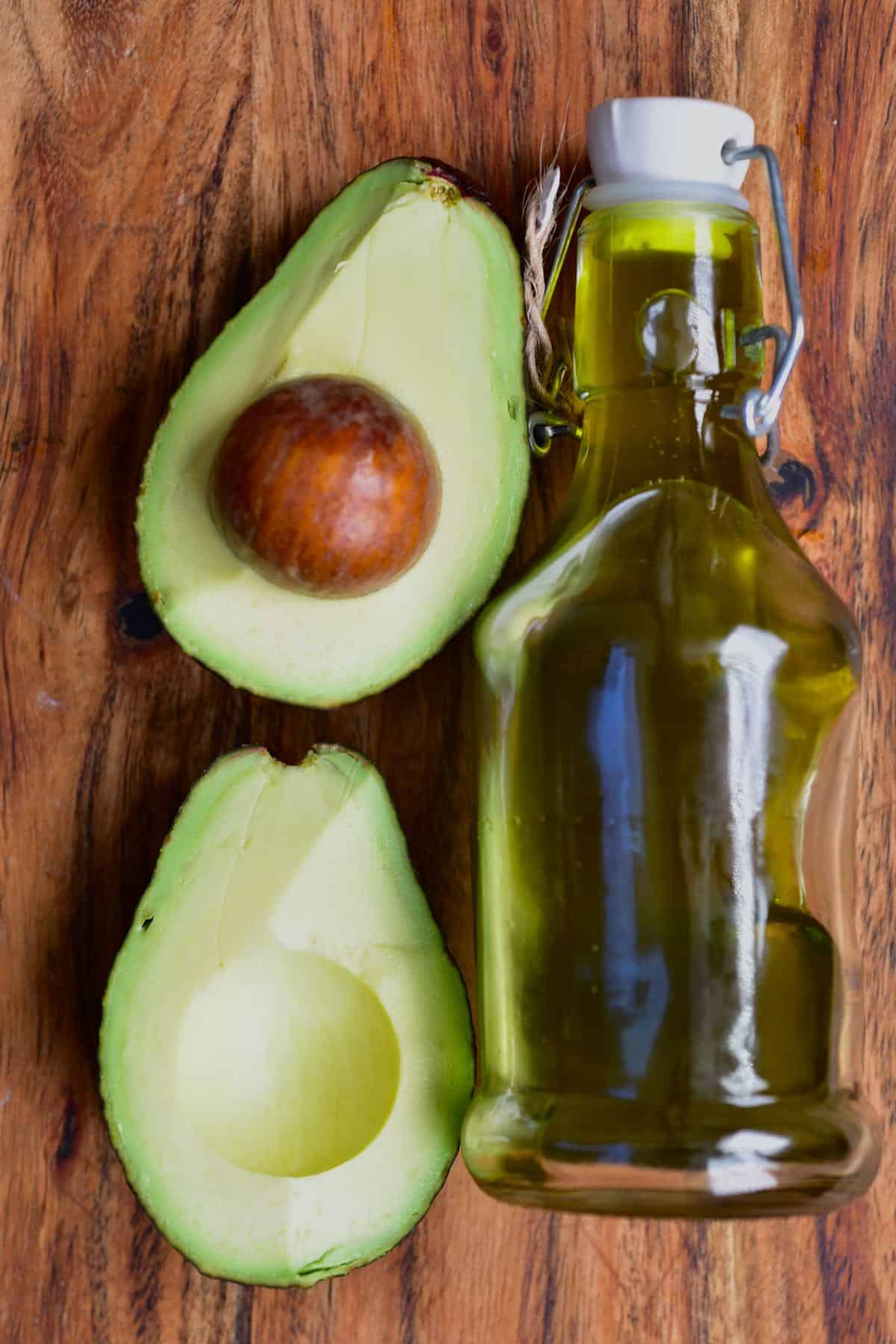
If virgin coconut oil or extra virgin coconut oil isn’t for you, perhaps this homemade avocado oil is more up your alley. Using just a few ripe (or overripe) avocados and a bit of patience, you’ll have some ‘green gold’ oil for all your cooking, beauty, and/or DIY needs. It’s a perfect way to use up the overripe avocados we all find ourselves with too!
I know that when I shared my coconut oil DIY with you, I got several messages/comments asking why to bother when it’s so easily bought in the shops. Well, that’s the case with most DIYs, really, but it certainly hasn’t put me off before.
Making your own pantry staples is not only fun, but it’s a great way to ensure that your products have no unwanted and unnecessary additives, preservatives, or chemicals. You can also avoid unnecessary extra processing and, very often, save money! Plus, with avocado oil, you can reduce waste too—by using all those surprise overripe avocados for the job!
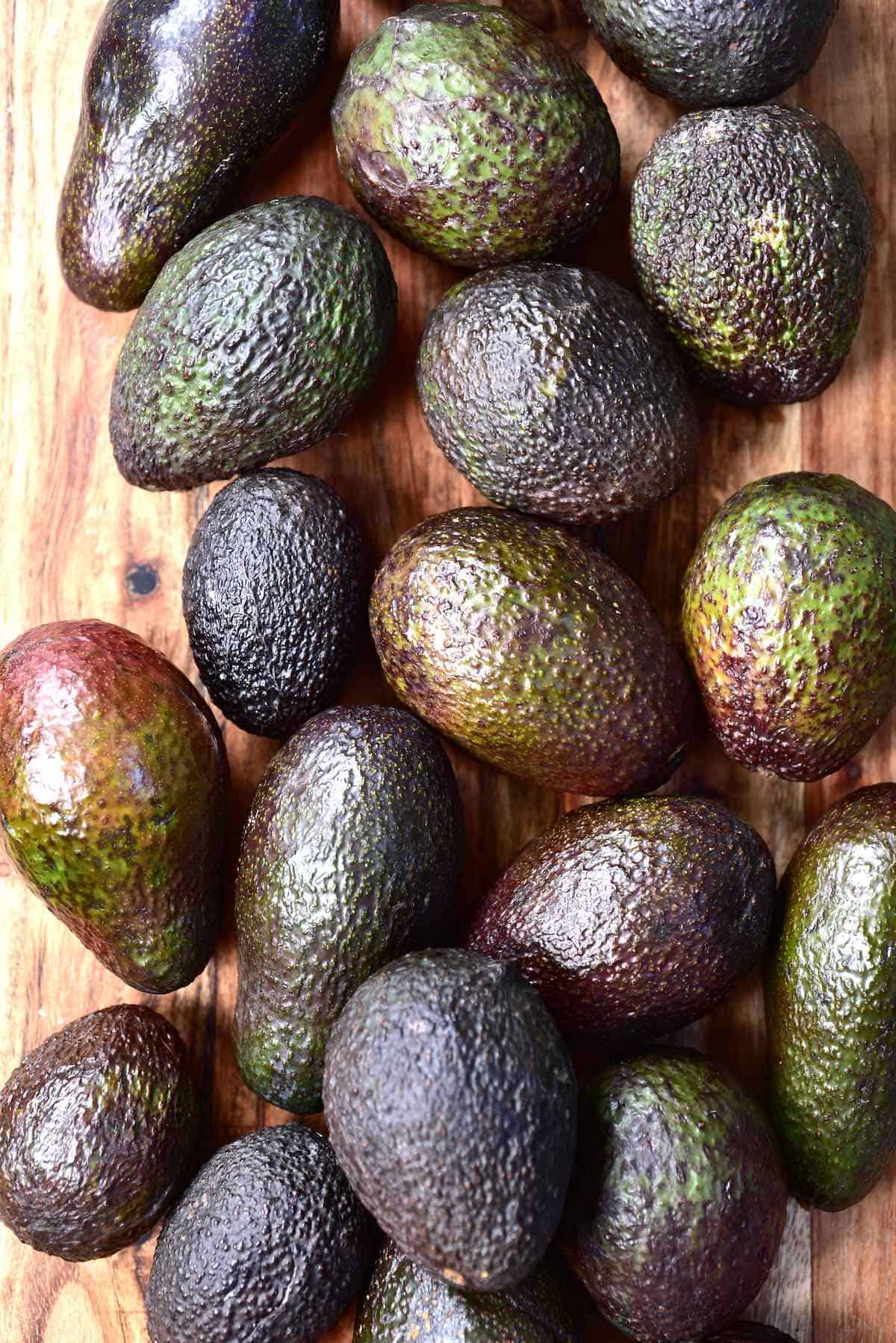
Okay, I’ll admit that avocado oil is not exactly the most cost-effective of my many DIYs unless you have a source of free/ low-cost avocados (or can slowly gather overripe avocados to stop them from going to waste (see notes*)). However, it’s certainly fun and worth sharing! Plus, there’s something extremely satisfying about seeing your avocados turn to an (admittedly yucky) brown paste before unexpectedly squeezing out a bounty of healthy, wonderful avocado oil.
This extra virgin avocado oil is also great for those who want to consume unrefined oils without the use of heat. While this process isn’t exactly cold-pressed ( I don’t have the equipment for that), this is the next best thing and a method ANYONE can do at home!
Want to save this recipe?
Avocado Oil Benefits
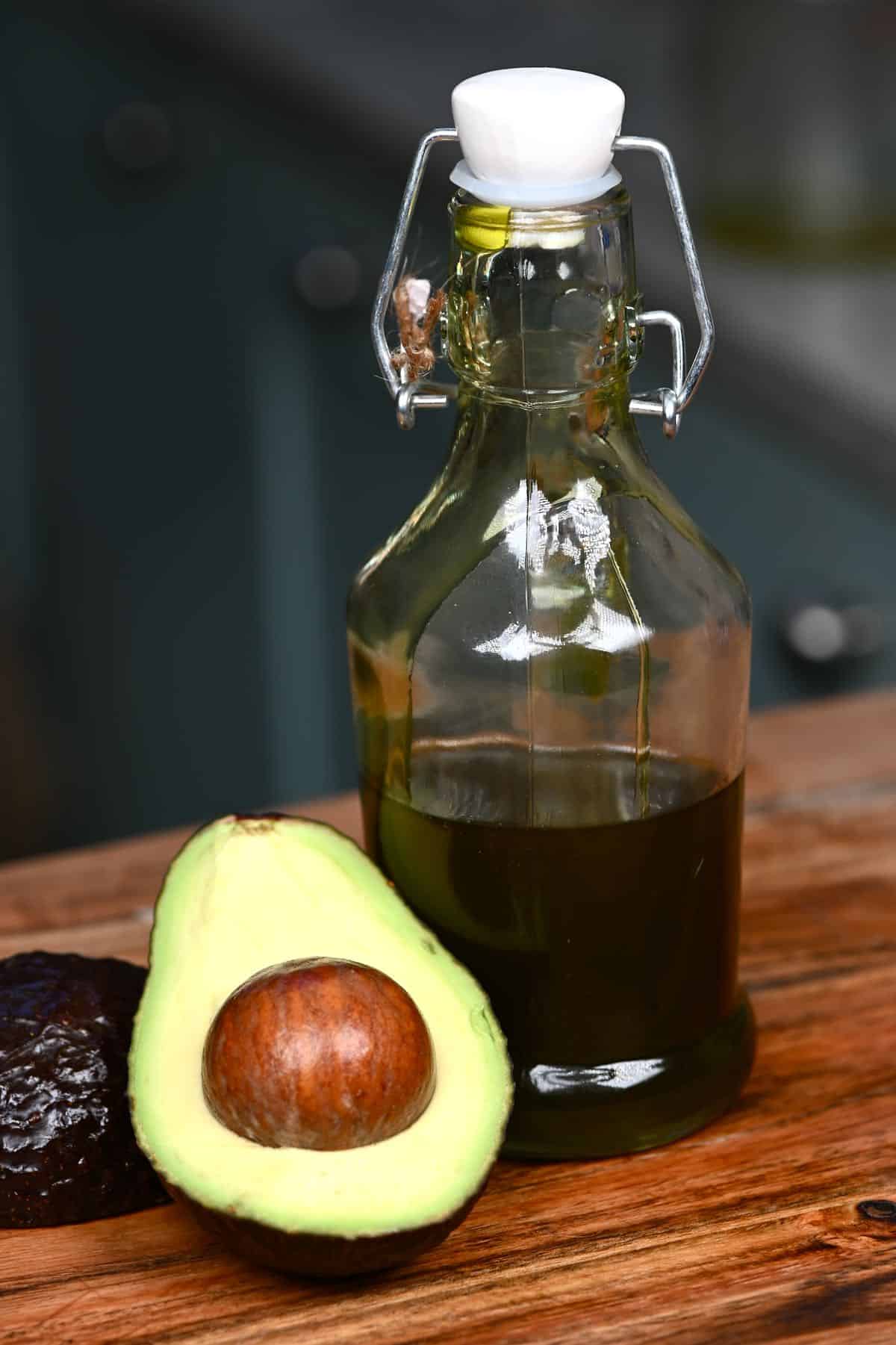
In general, avocados are known for their bountiful health benefits, including the benefits of their healthy fat. Likewise, avocado oil is also packed with healthy fats and antioxidants. Here are just a few of some of the health benefits of avocado oil.
- The oil is rich in Oleic Acid, a super-healthy fat—in fact, 70% of avocado oil is made up of it. Oleic acid is a monounsaturated omega-9 fatty acid that is wonderful for heart health and possibly even beneficial for boosting memory.
- It increases ‘good’ HDL cholesterol levels while reducing ‘bad’ LDL cholesterol and blood pressure, which is great for heart health.
- Packed with antioxidants – which help to fight oxidization in the body and damage caused by free radicals. This, in turn, reduces the risk of several chronic diseases (i.e., heart disease, diabetes, and other inflammatory-based conditions). Avocados are also a good source of Lutein, an antioxidant great for eye health!
- Beneficial for skin—Due to its fatty acids, avocado oil may be used to enhance wound healing and moisturize skin. It also has anti-inflammatory properties to relieve conditions such as psoriasis and eczema. The same can be said for its use on the scalp, reducing any dry, flaky skin.
- Can help enhance nutrient absorption—For nutrients to be absorbed, Several nutrients need to be combined with fat. Avocado oil is a great example of a fat that will help to increase the absorption rate substantially.
The Step-By-Step Instructions
Step 1: Prepare an avocado paste
First, mash the avocados into a smooth paste. You can use a hand masher, blender, or food processor for this.
I used a hand masher this time around to see the results. A smoother paste from a machine can yield slightly better results due to the more even drying.
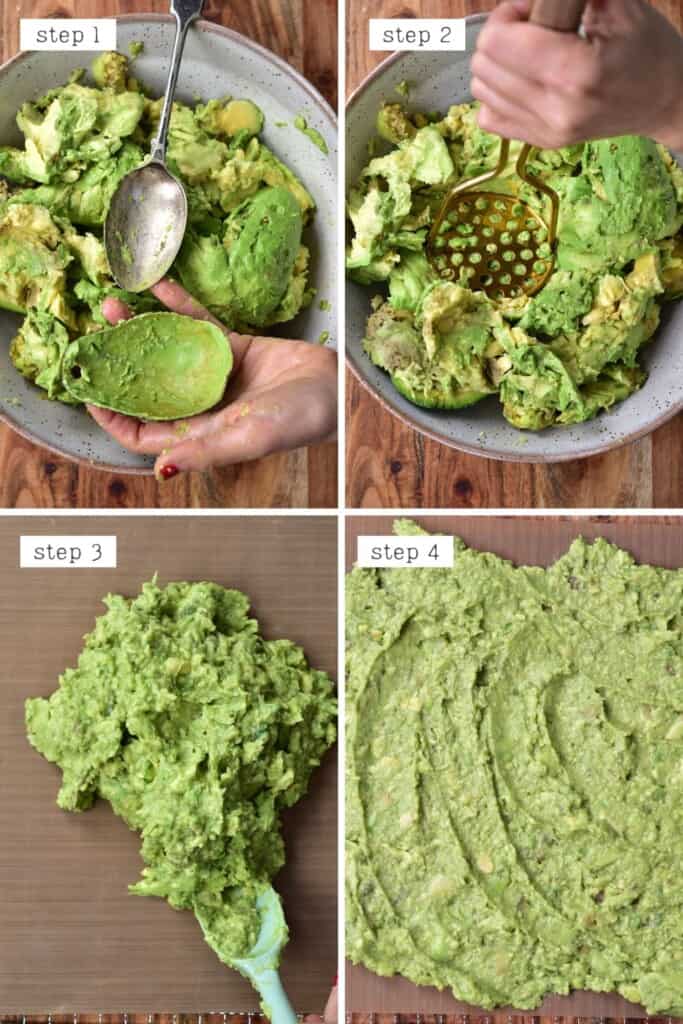
Once mashed, spread the avocado paste in a thin layer over a parchment paper-lined tray or similar surface. Aim to keep the layer below 1/2-inch thickness. If necessary, use multiple trays.
Step 2: Dry the paste
Allow the avocado paste to dry naturally in a well-ventilated area (away from direct sunshine) for a few days.
You may also use a dehydrator to speed up this process. However, keep the temperature below 40ºC/104ºF for the oil to remain extra virgin.
The amount of time this takes may differ depending on the climate/weather where you live.
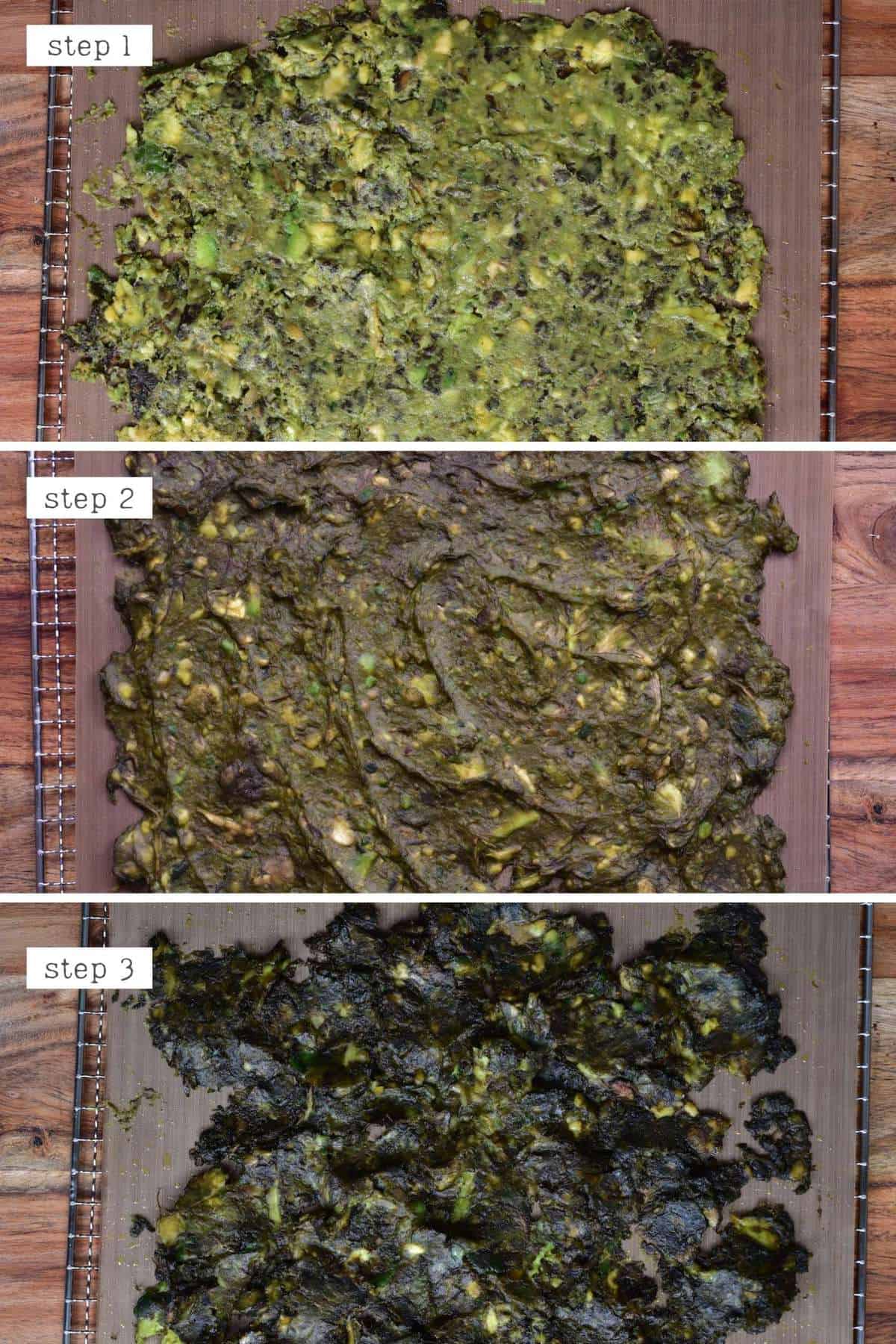
Once you notice that the top of your avocado paste has gone considerably brown, then mix it up well and re-spread into a thin layer. You’ll need to do this several times (at least 2 times a day – usually morning and evening).
Continue to do this until you have a very dark brown-colored paste. If yours was slightly chunky, like mine, then you may still have a few green bits. If it was super smooth, it’s likely that the entire paste is now brown.
Some people wait until the paste is almost completely dried, but if you do so, then you’ll find it incredibly difficult to extract the oil. One good way to know that it is ready is to look at your spoon when mixing the paste; the first few times you mix the mixture, it will pick up avocado. However, when it’s ready, you’ll notice that the paste no longer sticks to the spoon. Instead, it will look slightly oily.
Step 3: Extract the avocado oil
Place the avocado paste in a nut milk bag, muslin cloth, or similar material.
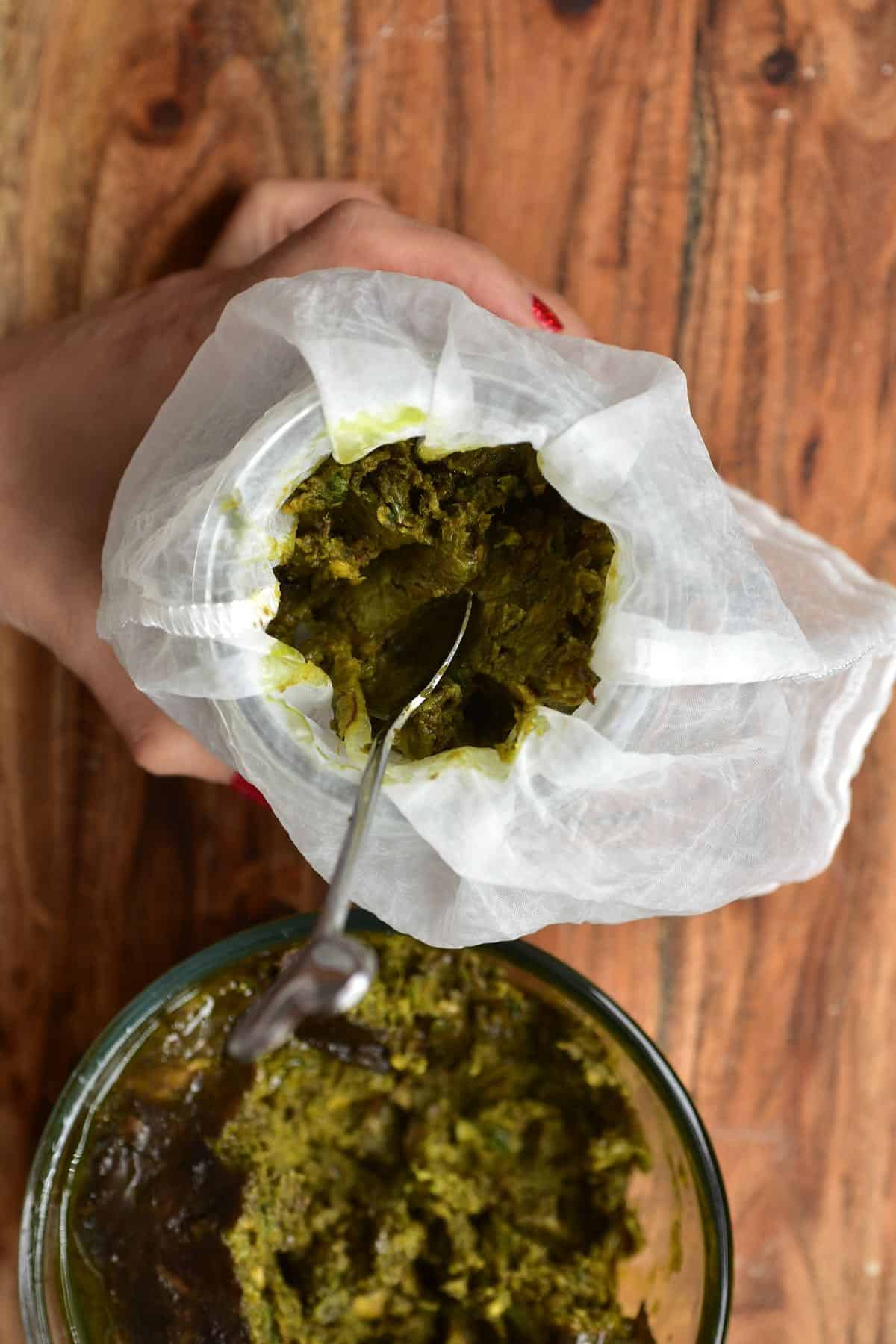
You can now either hand-squeeze the oil into a container or leave it to naturally drain, squeezing it at the end of the draining process to get the last of the oil.
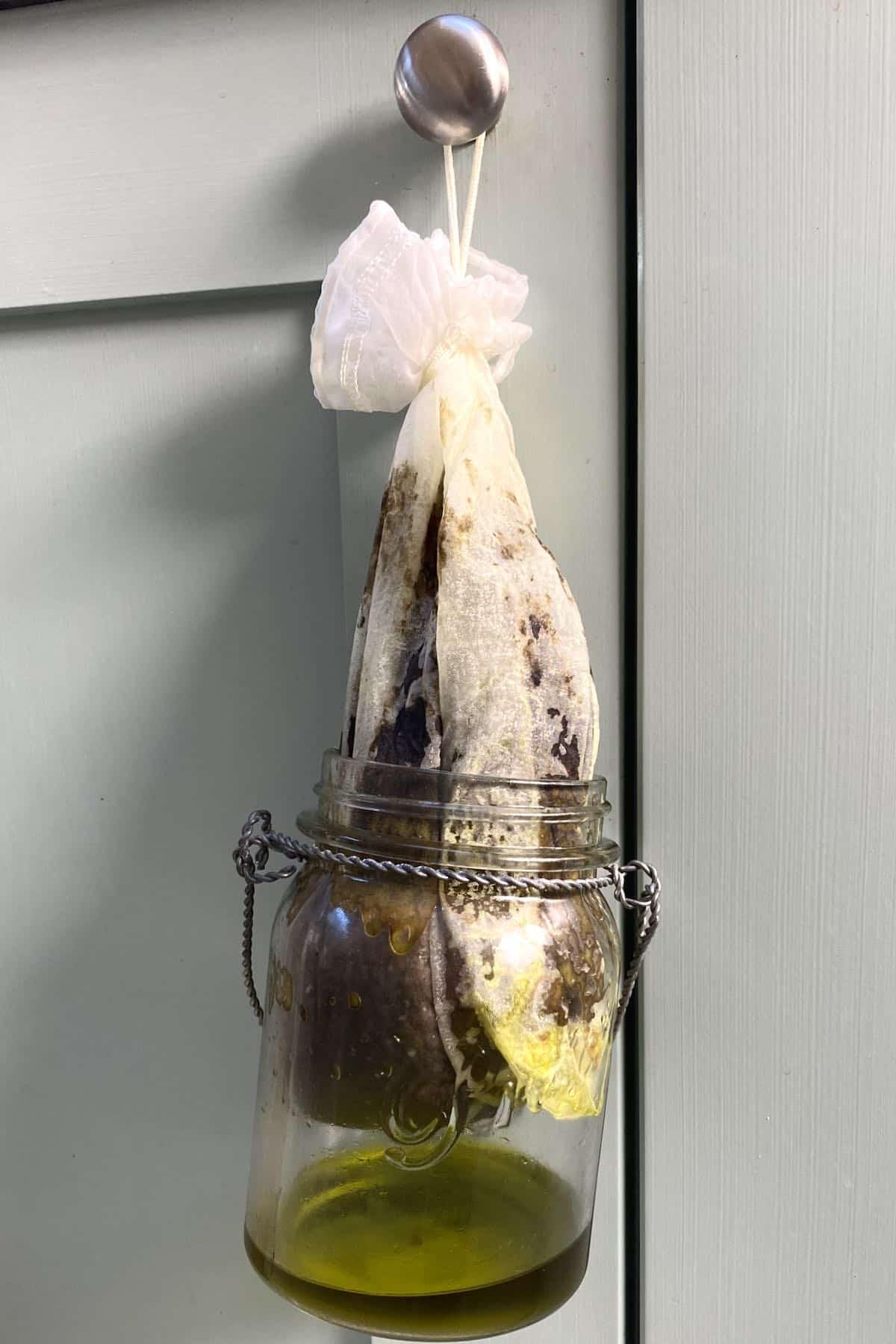
If the oil contains any ‘bits’, feel free to strain it once more before decanting it into a sterilized glass container.
Check the notes section at the bottom of the post for ways how to use the leftover avocado pulp, seeds, and skin!
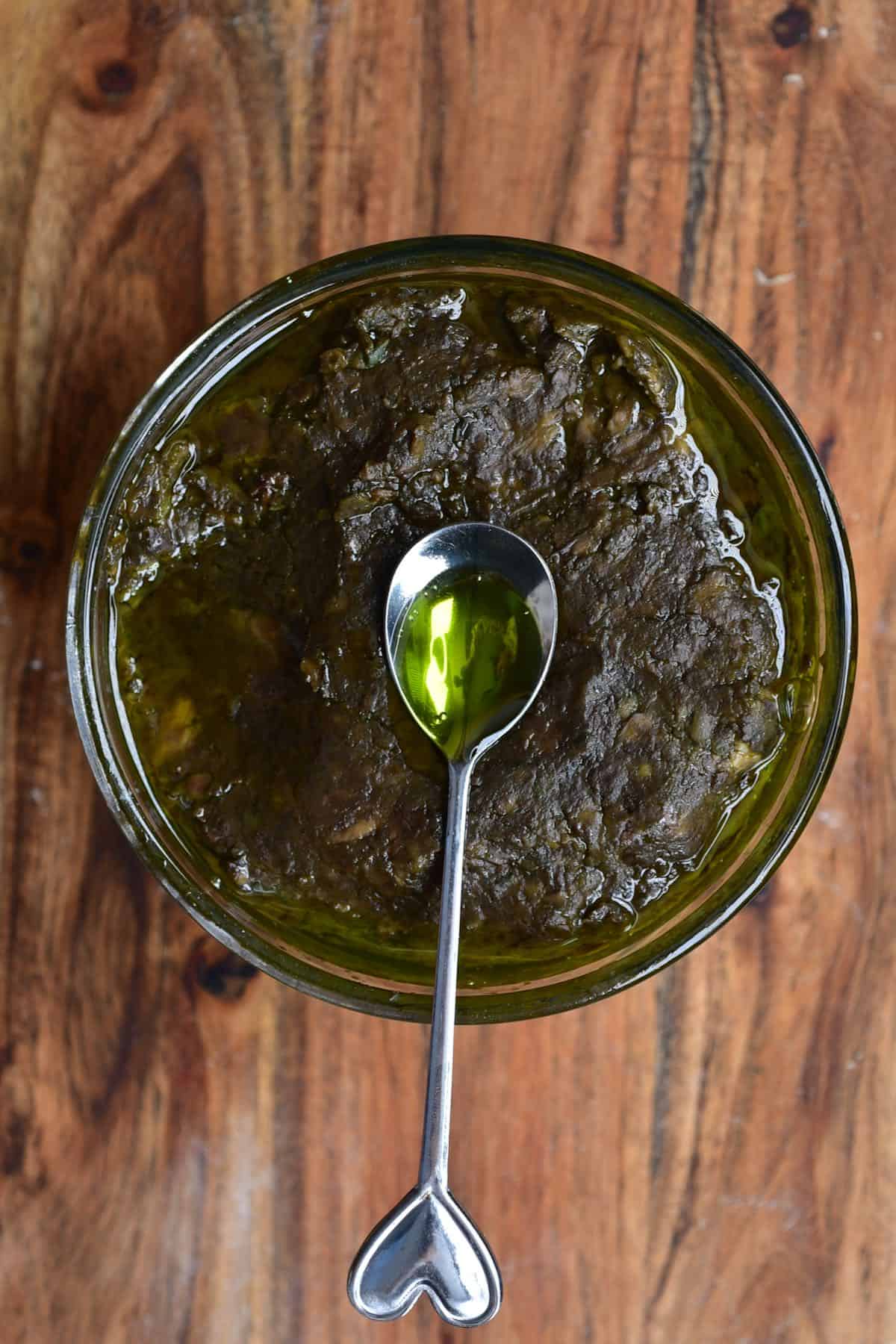
How To Store
Avocado oil is shelf stable and should last for months (possibly even up to a year) when stored in an airtight container away from direct heat and sunlight.
You can also keep the oil stored in the fridge to extend the shelf life further, by a few months even.
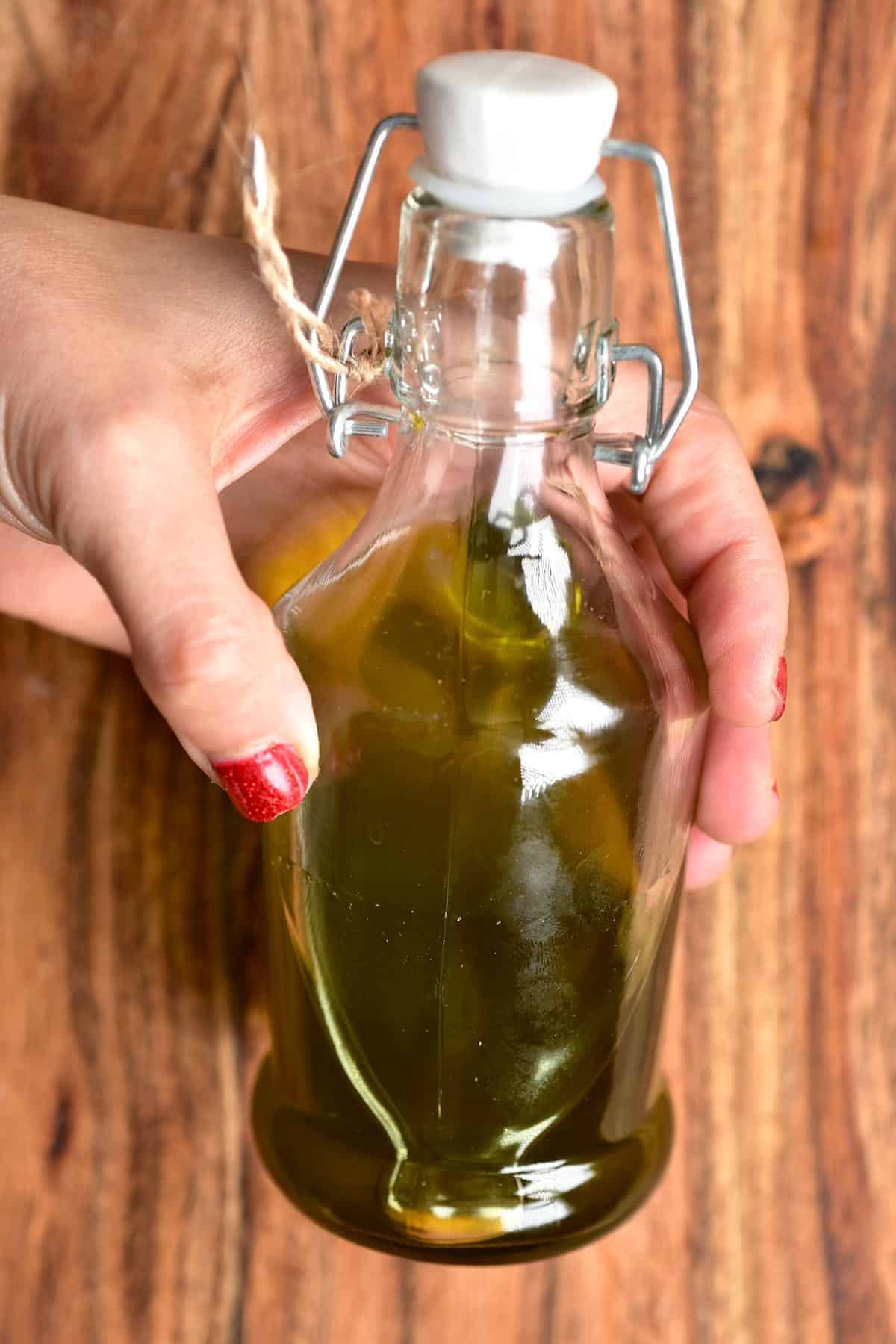
Avocado Oil Uses
You can use this oil in many of the same ways that you would extra virgin olive oil. Though, luckily for avocados, this oil has a higher smoke point (around 250C/480F) than many oils and yet still has a fairly neutral flavor (especially when heated).
- Within salad dressings and marinades – like this raspberry vinaigrette dressing.
- As an oil when baking – for sweet or savory.
- Use as a frying oil – whether to deep fry or saute – like with these Fried Padrón Peppers.
- Drizzled over roasting veg – like Super Crispy Smashed Potatoes (With Herbs) or Roasted Okinawan sweet potato.
- Use it to make homemade mayonnaise.
- Drizzle it over salads, soups, and dips – like homemade hummus or Moutabal.
- Add a little to your daily smoothie as a healthy fat boost.
There are several different ways to use it for beauty purposes. These include using it as a moisturizer, facial moisturizer, face mask, skin cream, scalp oil, hair mask, bath oil, etc.
How To Use The Leftover Avocado
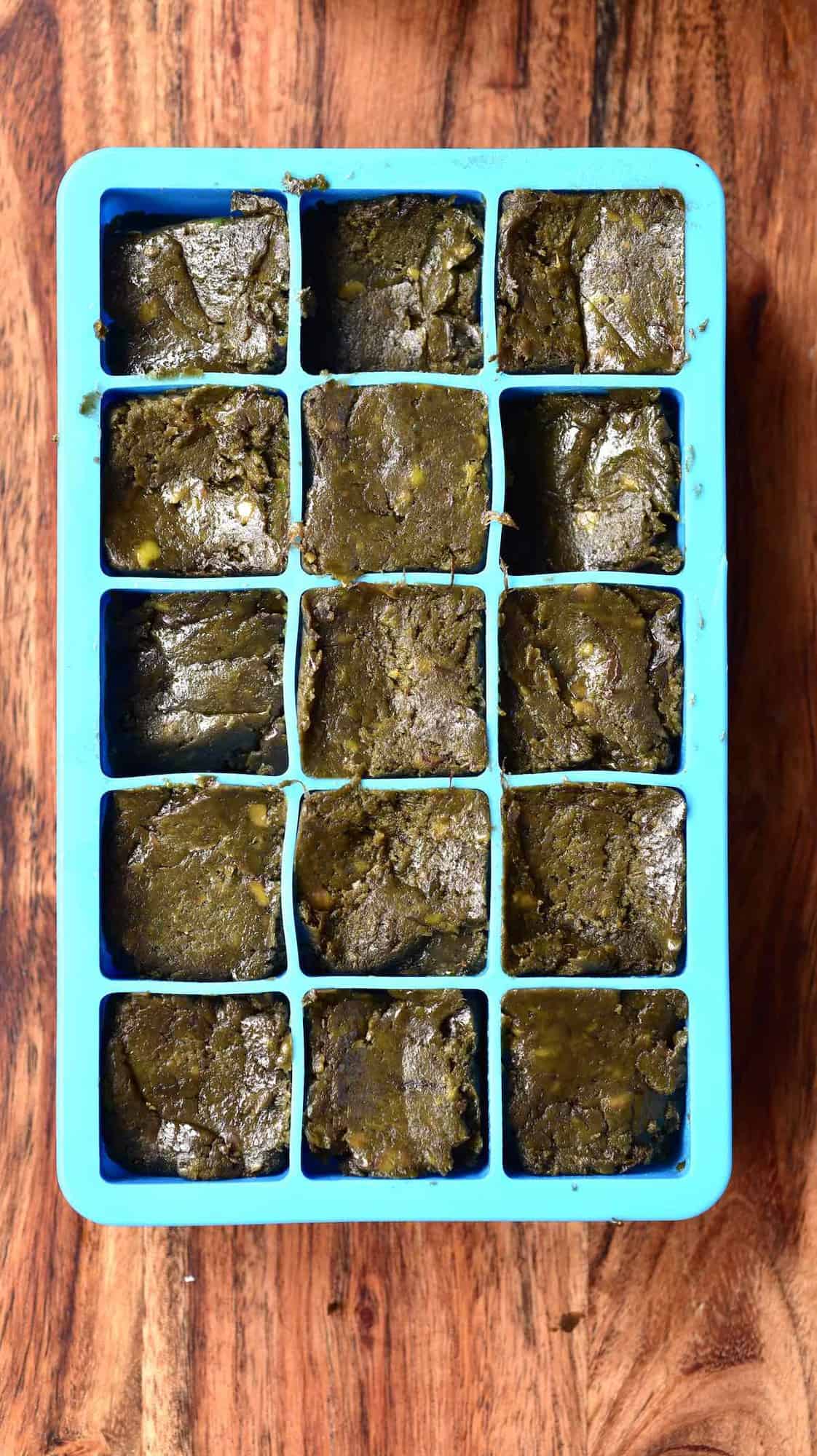
- Leftover avocado pulp: You can use this pulp to make brownies or as a spread similar to olive spread. You can also use the leftover avocado pulp for hair and face masks. It can also be composted or dried into a powder and added to increase nutrients within dishes. If you don’t want to use it all immediately, freeze the paste into ice-cube trays and thaw when needed.
- Leftover avocado seeds: You can use the skins and pits together to create a natural pink-hued dye, dry and grate/grind it into a powder to add to smoothies and dishes (or use as an exfoliant), make into a highly nutritious tea, or even use the pit to help grow a new avocado plant.
- Leftover Avocado Peels: As previously mentioned, these can be used to make a pink dye. The skin can also be used to extract oil if you have a presser (like an orange presser!). You can also freeze the skins and then use them as an interesting way to plate up food (like this Simple 4-Ingredient Avocado Ice Cream) or even to plant seedlings.
Let me know in the comments if there are ways that I haven’t mentioned above, to use all the leftover avocado parts!
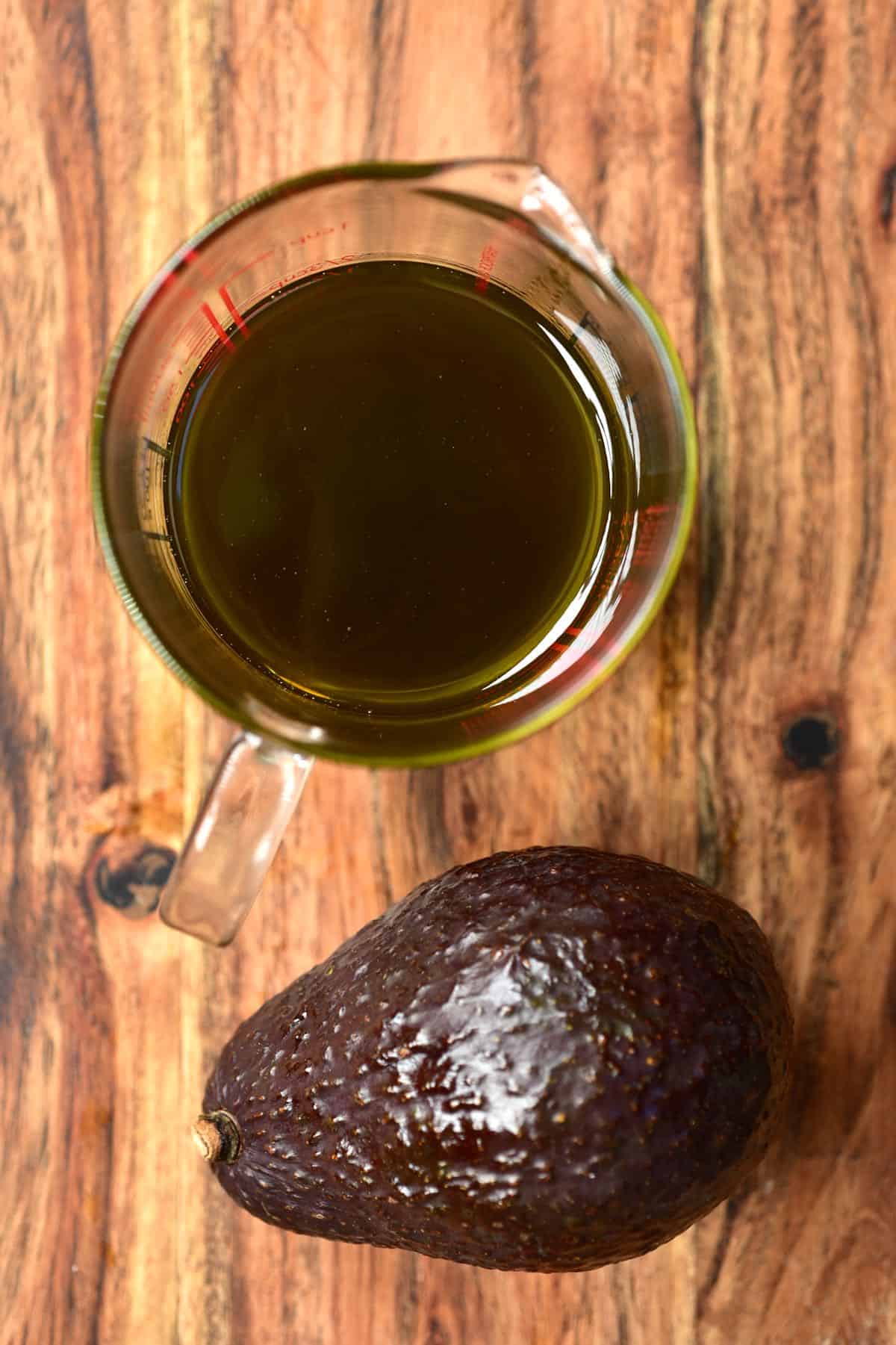
DIY notes
- Avocado oil can differ in shade and yield based on what avocados you use and several factors. The color can range from a golden yellow-green to dark green.
- To make organic avocado oil, simply use organic avocados.
- Tip for cheap avocados: If you’re purchasing avocados from a farmer’s market, look for overripe avocados. You’ll often get them cheaper (or can haggle to get them cheaper).
- You can also use any overripe avocados that you have at home ( it happens to all of us). If you want to wait until you have a good amount before making the oil, then freeze the overripe avocados until you have enough. Thaw them on the counter before using them.
- If you plan to use avocado oil to help treat any skin condition, it may be best to consult your doctor first and/or perform a skin patch test to check for potential allergies.
Related DIYs
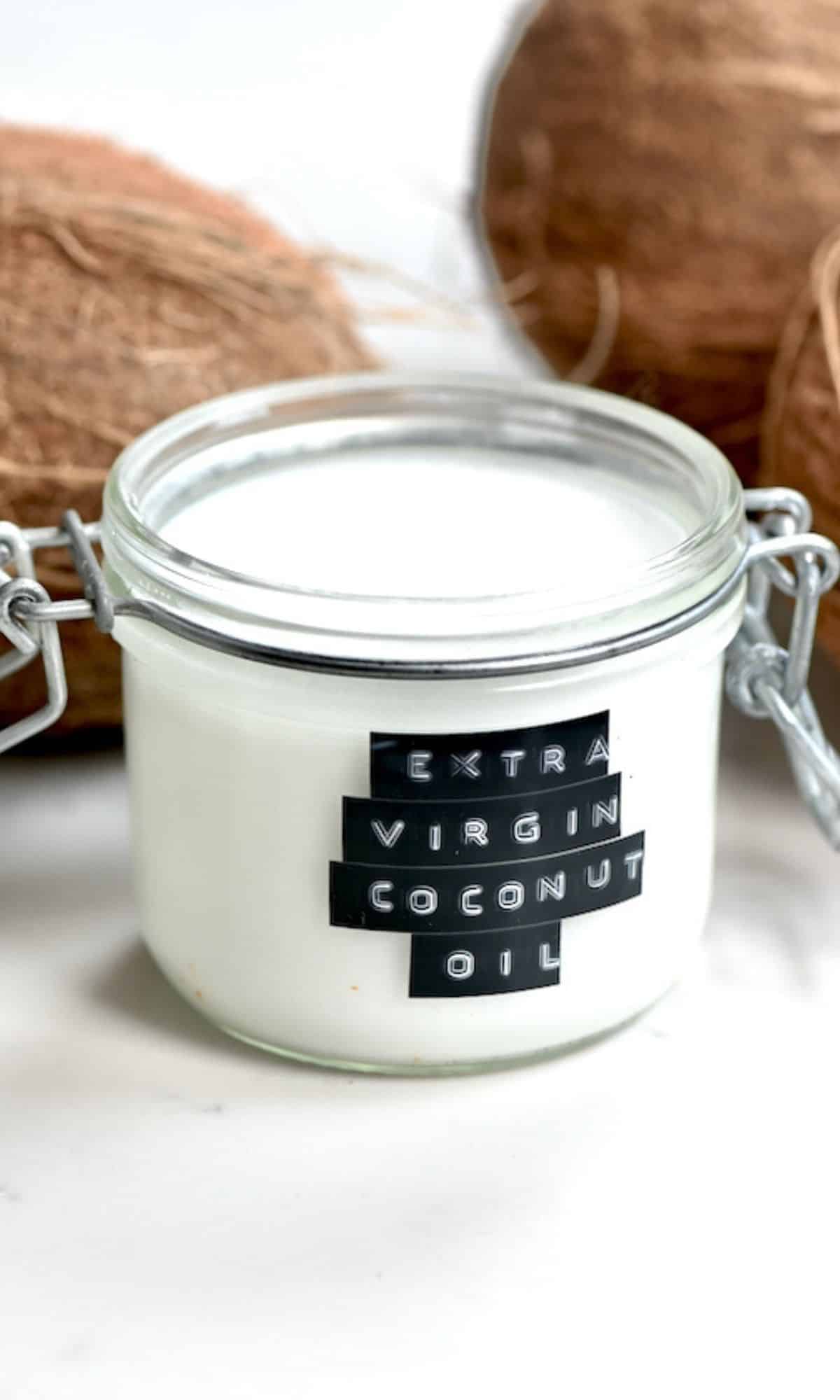
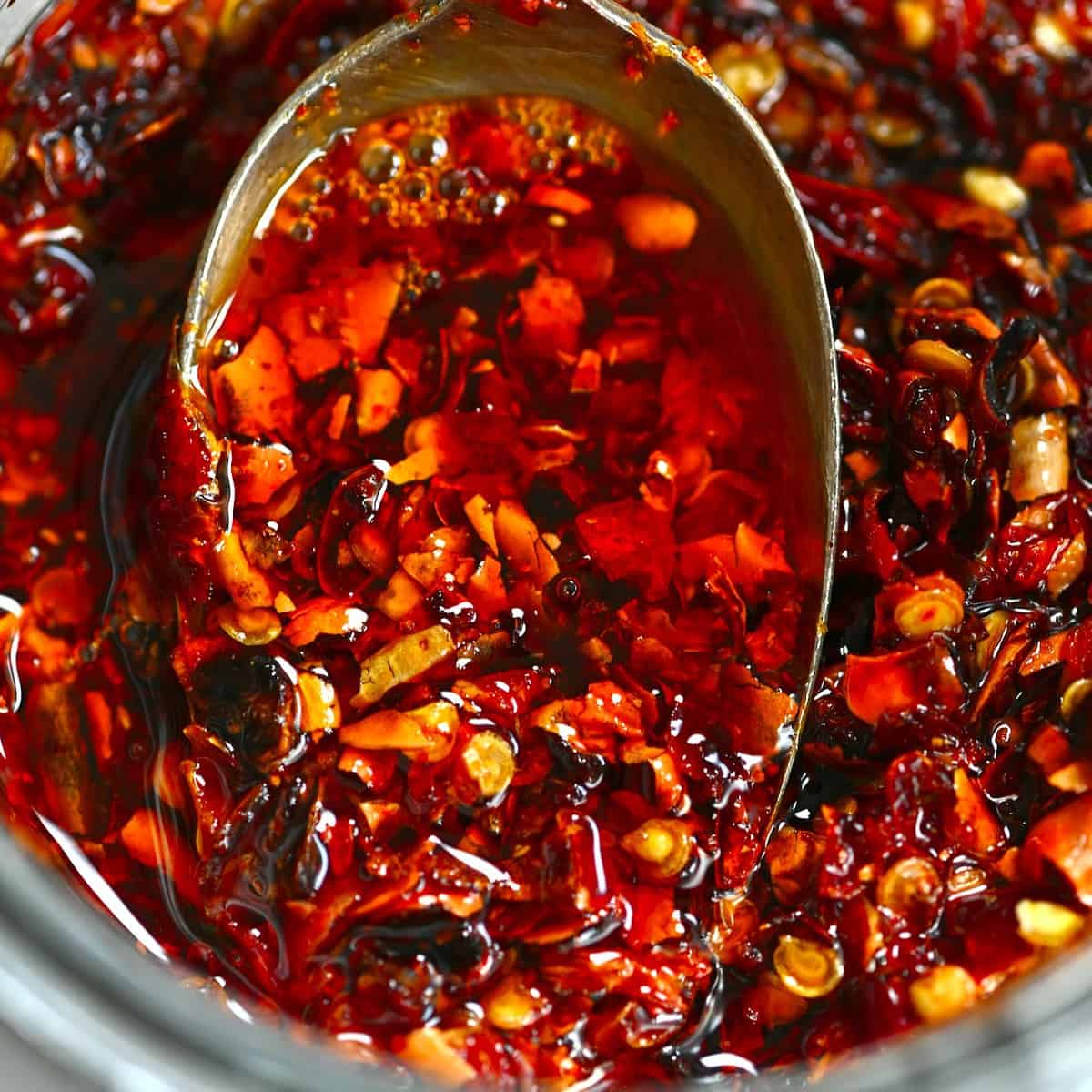
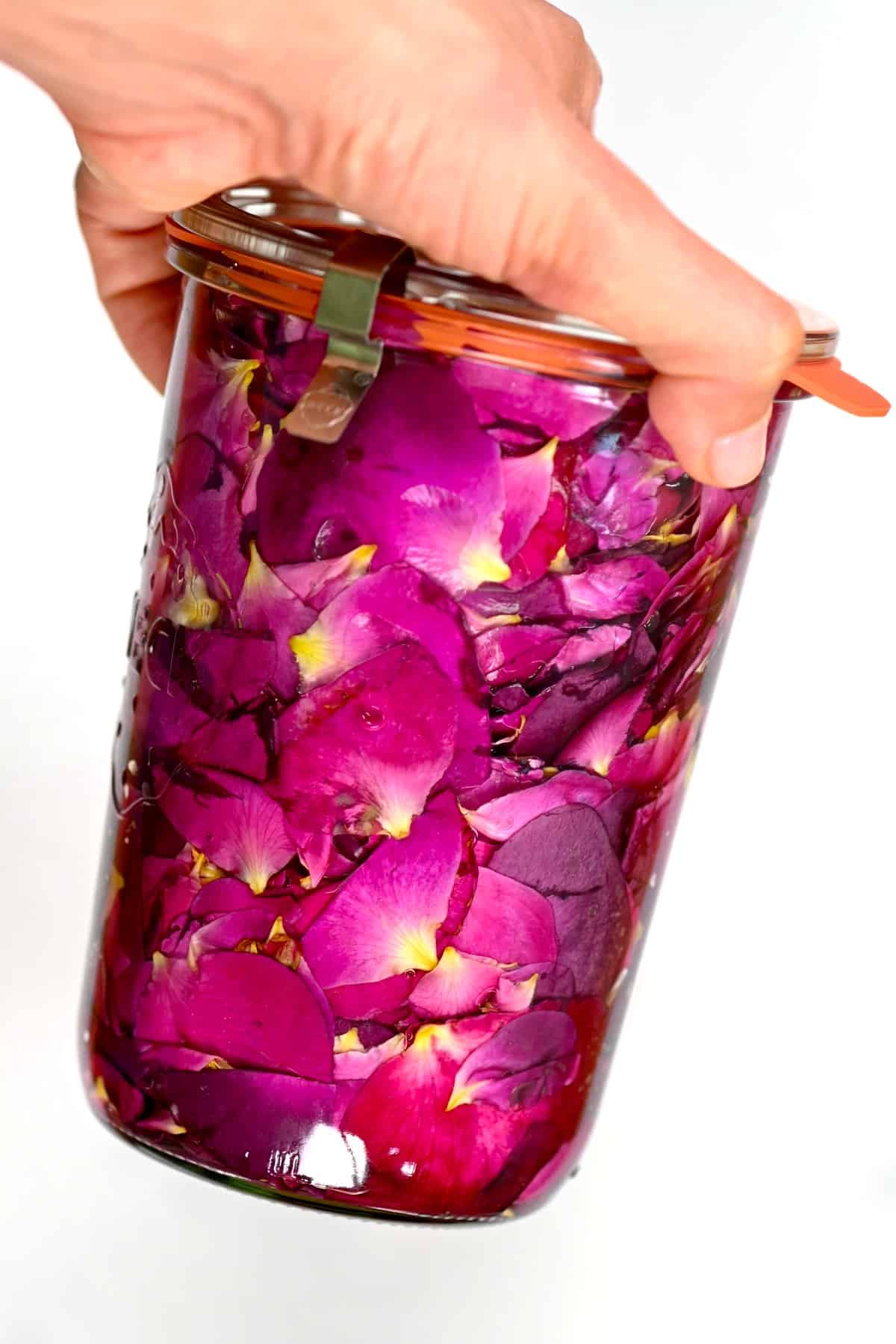
If you try this DIY for how to make avocado oil, then let me know your thoughts and questions in the comments. I’d also really appreciate a recipe rating and would love to see your recreations – just tag @AlphaFoodie.
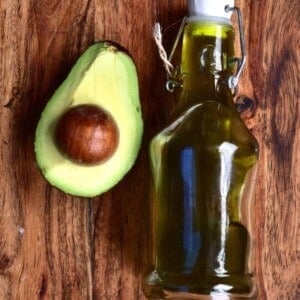
How To Make Avocado Oil (Extra Virgin – Cold-process)
Ingredients
- 10 avocados, medium
This many medium avocados yields about 2/3 cups of avocado oil.
Instructions
Step 1: Prepare an avocado paste
- First, mash the avocados into a smooth paste. You can use a hand masher, fork, or blender/food processor for this*.
- Once mashed, spread the avocado paste in a thin layer over a parchment paper-lined tray or similar surface. Aim to keep the layer below 1/2-inch thickness. Use multiple trays, if necessary.
Step 2: Dry the paste
- Allow the avocado paste to dry naturally** in a well-ventilated area (away from direct sunshine) for a few days (4-5). The amount of time this takes may differ depending on the climate/weather where you live.Once you notice that the top of your avocado paste has gone considerably brown, then mix it up well and re-spread into a thin layer. You'll need to do this several times (at least 2 times a day – usually morning and evening).
- Continue to do this until you have a very dark brown colored paste. If yours was slightly chunky, like mine, then you may still have a few green bits. If it was super smooth, it's likely that the entire paste is now brown.***
Step 3: Extract the avocado oil
- Place the avocado paste in a nut milk bag, muslin cloth, or similar material. You can now either hand-squeeze the oil into a container or leave it to naturally drain, squeezing it at the end of the draining process to get the last of the oil.If, for whatever reason, there are any 'bits' in the oil, then feel free to strain it once more when decanting it into a sterilized glass container.
How To Store
- Avocado oil is shelf-stable and should last for months (possibly even up to a year) when stores in an airtight container away from direct heat and sunlight.You can also keep the oil stored in the fridge to extend the shelf life further, by a few months even.
Notes
Other DIY notes
- Avocado oil can differ in shade and yield based on what avocados you use and several factors (the color can range from a golden yellowy green to dark green- green is best!).
- To make organic avocado oil, simply use organic avocados.
- Tip for cheap avocados: If you’re purchasing avocados from a farmers market, it can be a good idea to look out for overripe avocados as you’ll often get them cheaper (or can haggle to get them cheaper).
- You can also use any overripe avocados that you have at home ( it happens to all of us). If you want to wait until you have a good amount before making the oil, then freeze the overripe avocados until you have enough, thawing them on the counter till they reach room temperature.
- If you plan on using avocado oil to help treat any skin condition, it may be best to consult your doctor first and/or do a skin patch test to check for potential allergies.
Read the blog post above for ways to use the leftover avocado flesh, seeds (pits), and skin!










Have You ever made basil oil?? If Yes then this Recipe?? for Avocado Oil is Missing some important natural ingredients
Hey Joseff! Basil oil is usually made by blanching fresh basil leaves for a short time, then blending them with olive oil and straining to create an infused oil. This avocado oil recipe, however, is a pure extraction process from the avocado itself, without infusions or extra ingredients.
If you were thinking of a specific method or ingredient that you feel is missing, I’d love to hear your thoughts!
This is awesome. the wind in California knocked hundreds of avocados off the trees and we gave a ton to first responders, but I decided to try this with a couple dozen. I put it on parchment paper and it seems like the paper absorbs a lot of the oil. Any thoughts on this?
Thanks for the recipe
Hi Francine! That’s amazing that you were able to share so many avocados and put the rest to good use. Yes, parchment paper can absorb some of the oil, which is pretty normal. If you want to minimize that, you could try using a silicone mat or a non-porous surface like a glass or metal baking sheet instead. Just keep an eye on it to ensure even drying. Hope that helps—enjoy your homemade avocado oil! 🙂
Awesome and informative. Since I just purchased a dehydrator to make spices I can use that. How long would you estimate I should cook at 104 degrees?
Hey Michael! You can typically cook at 104ºF for about 6-8 hours, but it really depends on the avocados themselves and the location too. Just keep an eye on it—the paste has to become very dark brown. Enjoy using your dehydrator!
Good enlightenment!!Love it.
Hey Tijani! Thanks for your comment! I’m glad you found it helpful. If you have any more questions about making avocado oil, just let me know!